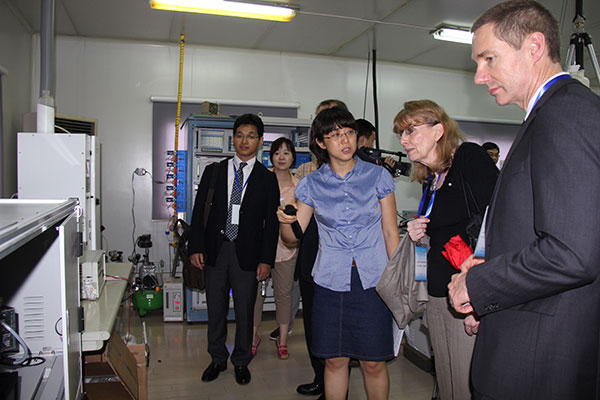
Every day, Li Yunting collates data related to pollutant levels and the weather forecasts, and issues a prediction about air quality for use by decision makers and the general populace.
“From the monitoring records, the efforts against air pollution work, especially those in the first eight months, have made me confident about further improvement,” said Li, who has worked at the Beijing Environmental Monitoring Center for 18 years.
In the first eight months of this year, the average concentration of PM2.5 – hazardous fine particulate matter – in the capital has been 35.5 percent lower than during the same period in 2013, according to data released by the center.
“The records show that this dramatic decline is the result of measures, such as the closure of polluting plants and reduced coal consumption, along with better weather conditions which dispersed the pollutants,” she said.
For the bureau’s technicians, who collect and analyze the data and weather patterns, smog brings not only worry and concern, but also a heavier workload, because it often triggers emergency responses, such as the suspension of production that are based on their forecasts and analysis of the sources of pollution, she said.
The Beijing authorities began monitoring and researching air pollution more than 10 years ago, developing advanced technologies and forming a team of researchers with deep experience, with the aim of providing in-depth information and accurate forecasts for policymakers.
“In the past five years, we have attracted more attention. That has resulted in more work and sometimes it is exhausting, but it’s worth it when we see more blue skies and win greater acclaim from the public,” Li said.


